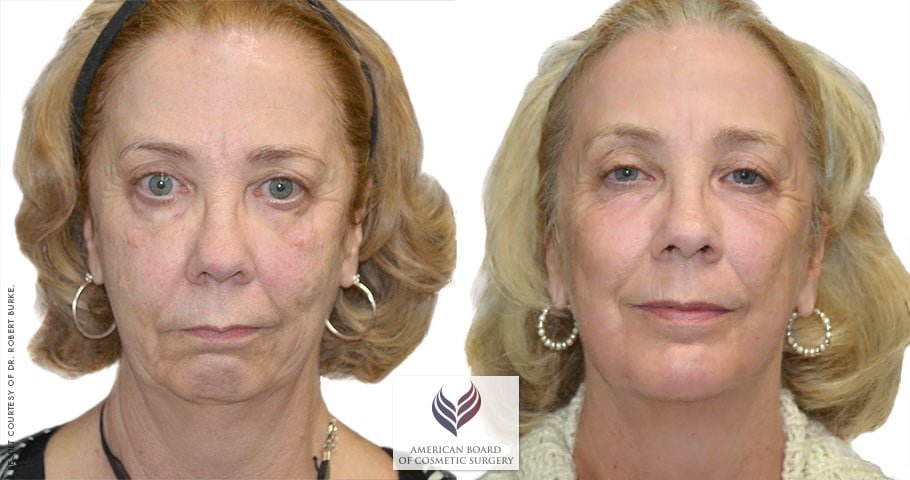
Facelift, or rhytidectomy, is a procedure that requires refined judgment on the part of your board certified cosmetic surgeon. To learn more about current techniques and trends, we sat down with some of our Diplomates to get their take on this nuanced procedure for turning back the clock in the aging face and neck.
Facelift techniques are constantly evolving—but classic techniques also endure
“Modern facelifting is really only 50 years old. There have been pressures from surgeons, over time, to enhance their techniques and achieve improved results. The net result over a period of decades is improvement and refinement, to be sure, but also recapitulation of techniques that were pioneered an awfully long time ago.
Now that the academy has the benefit of master surgeons like Dr. Howard Tobin, Dr. Anthony Geroulis, and Dr. Bill Evans who have been doing this for 50 years, we have the opportunity to refine current skills, but also hold ourselves accountable to prior meters so that we can enjoy the best of both worlds: minimal access, but still accomplishing maximal lifts via those smaller approaches.”
—Dr. Alexander Sobel, Past President of the ABCS
What does this mean for you, as a facelift patient?
Patients today are benefiting from decades of discovery and experimentation with facelift procedures. While it may be tempting to identify a certain new technique as the “best,” it is important to be open-minded: depending on your individual anatomy and goals, your cosmetic surgeon may recommend a mix of traditional, modernized, and minimally invasive facial rejuvenation techniques to achieve natural-looking results.
Benefits of the deep plane facelift technique: “Do I get new sheets, or get a new mattress?”
“Facelift is a really rewarding procedure. Most of us look in the mirror every day, and we just start to see that what we look like now is not how we feel—and it’s not how we used to look. So how do we get that back?
With a facelift, the biggest thing that allows you to look natural is moving things to the right spot and doing it the right way. One of the procedures I am able to do is what we call a ‘deep plane lift’. What that means is we’re not just pulling on the skin, but instead we’re trying to lift the inside sutures back up to where it used to be so the skin just lies there nicely in a raised position.
I often tell people, it’s like looking at your bed, and you’re going, “I don’t like my bed. Do I get new bedsheets, or do I get a new mattress?” With a deep plane facelift, we’re changing out the mattress. We’re going to go and lift everything underneath back where it used to go. Then, we go back and ‘straighten the bed sheets’ by tightening the skin, and that’s how you’re getting that nice look. The crux of it is getting the inside structures—your cheeks, your jowls, your jawline—back. That’s where the money’s at.”
—Dr. Samir Pancholi, Past President of the ABCS
What does this mean for you, as a facelift patient?
In the past, facelifts primarily focused on lifting the skin alone; while eliminating loose skin can “turn back the clock,” a truly natural-looking result often requires a deeper approach. Today, cosmetic surgeons have advanced techniques for restoring the underlying musculature when structural tissues have succumbed to gravity and aging.

Facelift incision placement is a nuanced art
“One of the concerns about facelifts is, ‘Where will the incisions be, and will everyone be able to see them?’ What we try to do a little bit differently than most is to hide the incision in the hairline. During the procedure, we actually shave some of the hair right in front of the ear so that we can place the incision in the hairline, and your hair will grow through it and hide the scars. The incision crawls around your ear, but we hide it as much as we can inside the hairline.
Once you’re done with the recovery (about two months out is when your hair really starts to grow), you’ll be able to pull your hair back and hopefully not be able to detect a thing. On men, same thing: you should be able to go and get your hair cut nice and tight and have that incision hidden in your hairline so that no one sees anything in the front. All of these techniques are the nuances to really allow you to have that nice look without letting everyone else see your incisions.”
—Dr. Samir Pancholi, Past President of the ABCS
What does this mean for you, as a facelift patient?
Traditional facelift incisions can be adjusted and individualized to some degree, to offer greater concealment. Today, with proper scar care following surgery, facelift patients can enjoy remarkable results with little to no visible scarring.
Forty is not too young for a facelift
“I think the perfect age for a facelift is when you feel like you’re ready. That can be in your forties, or that can be in your eighties. It’s when you begin to see aging, and it concerns you.
I perform facelifts on a lot of younger patients who are motivated to have a facelift to stop the aging process. If you’re 45 and you have a facelift, there is a lasting benefit: you likely will not think about another procedure or ‘touch-up’ again until you’re 60. That’s a bonus for a lot of people, when compared with noninvasive treatments whose effects are more temporary.
My younger facelift patients simply want to look great—they’re usually active socially. Some have had children later in life, and though they’re still relatively young, they feel like the oldest parent at the parent meeting and on the soccer field. And so they want to capture that youthful look while they’re still very active.
Oftentimes, if you wait to get a facelift at 80, the changes that have occurred are a little more difficult to repair, to fix, to restore. With younger patients, I can achieve a more comprehensive result. Plus, younger patients have an easier time with the surgical recovery and recover a little more quickly. That’s a very happy group of patients for my practice.”
—Dr. Kevin Duplechain, ABCS Diplomate & President of the AACS
What does this mean for you, as a facelift patient?
Botox Cosmetic®, dermal fillers, and many other advanced non-surgical options are available to address early signs of aging. These are valuable options, yet they require frequent maintenance and certain patients with signs of facial aging may be happier making the up-front investment in a facelift to enjoy a lasting youthful appearance for many years to come. Having a facelift at a younger age has other benefits: you will heal faster, and natural-looking results will give you a more ageless appearance as you enter your 60s and beyond.
For a natural result, “Reposition all the deeper structures”
“Most people that come in for a facelift consultation, their number one statement to me is, ‘I don’t want a facelift’—because they’re scared of looking different or unnatural. Our facelift technique is built on the premise that we’re going to reposition all the deeper structures where they belong so that the patient looks very natural. If you really lift the deeper structures, like the muscles in the neck and fascia over the face, and perhaps add a very natural brow lift, you have a very good deep plane facelift that looks very natural.”
—Dr. Jacob Haiavy, Past President of the ABCS
What does this mean for you, as a facelift patient?
Facial rejuvenation patients should not avoid a surgical facelift out of fear of an unnatural-looking result. Compared with alternative and non-surgical techniques, a facelift can in fact offer a more natural-looking restoration of volume and lift for patients who need structural lifting of facial tissues. The results of a facelift are simply not achievable with non-invasive procedures.
A cosmetic surgeon perfects their technique over time
“I’ve spent most of my career trying to perfect my understanding of the facelift. As a physician, you think when you finish school and residency that you know a lot of things, but it really takes a decade or two to refine your craft. And after many, many years of working on this, I am deeply confident that we’re doing great work for our facelift patients at my practice.
I primarily perform the deep plane facelift technique. I think this is a fabulous operation because it makes people look natural, which is very, very important. Patients tell me, ‘I don’t want to look done; I don’t want to look surprised; and I don’t want this lateral sweep that makes people look funny.’
Not only does the deep plane technique create natural-looking results, but it has incredible longevity because we’re not pulling on the skin—we’re placing tension on the elements that have dropped. For instance, when you look at someone’s face, there are three components to what makes people age: their eyes, their cheek, and then their jowl. Done well, a deep plane facelift will lift the eyelid, raise the mid-cheek fat that makes people look ‘droopy,’ and it will tighten the jowls.”
—Dr. Kevin Duplechain, ABCS Diplomate & President of the AACS
What does this mean for you, as a facelift patient?
Deep plane facelift technique is nuanced, and therefore requires a cosmetic surgeon both skilled in this procedure and dedicated to the art of face lifting. Your surgeon should educate you on the details of your procedure, helping you to understand which areas of the face and neck will be rejuvenated during your procedure. Looking at the surgeon’s before and after photos, their nuanced technique should be clear in the natural results they achieve.
About the American Board of Cosmetic Surgery
The American Board of Cosmetic Surgery is the only board dedicated exclusively to excellence in cosmetic surgery. Our board certified surgeons are fellowship-trained or hold equivalent experience and expertise in ethical, safe, and aesthetically sound cosmetic procedures. Find a surgeon near you using our surgeon directory »


